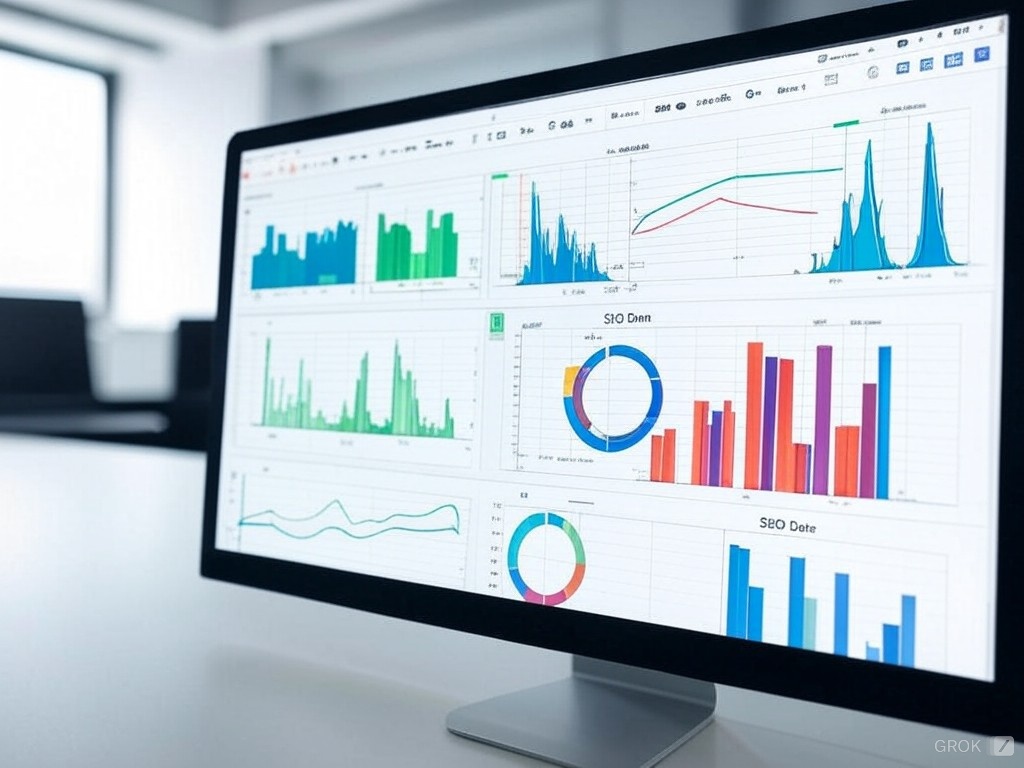Welcome to the World of Effortless SEO Reporting! 📊✨
Let’s be real—manually generating SEO reports can feel like running a marathon on a treadmill. Sure, you’re moving forward, but it’s exhausting, time-consuming, and repetitive. Wouldn’t it be nice if your SEO reports could magically generate themselves with just a few clicks?
Well, good news: You can automate your SEO reporting using Google Sheets! This means no more copying and pasting data from Google Analytics, Google Search Console, or other tools. In this tutorial, we’ll show you how to set up automatic reporting systems in Google Sheets, pulling in real-time data from APIs, and visualizing key SEO metrics like rankings, traffic, and conversions. Not only will this save you time, but it’ll also keep your SEO workflow fresh and organized!
So, if you’re tired of hitting “Refresh” and copying rows of data into a spreadsheet, grab a cup of coffee, and let’s dive into the magic of automated SEO reports in Google Sheets.
Step 1: Setting Up Google Sheets
Before we dive into the API integrations, let’s first set up your Google Sheet. You’ll need a fresh, blank sheet that will act as your SEO dashboard. You can name it something like “SEO Reports Dashboard” to keep things clear.
- Create separate tabs for different metrics you want to track. For example:
- Traffic Data
- Ranking Data
- Conversion Data
- Site Performance
Each tab will hold the respective data from your various APIs.

Step 2: Accessing APIs for SEO Data
To automate your reports, we’ll need to pull in data from various sources like Google Analytics, Google Search Console, or any other tools you’re using. The process involves using APIs to get the data directly into your Google Sheets.
For this, we’ll use Google Sheets’ built-in functions like IMPORTDATA, IMPORTXML, and Google Apps Script to connect to the APIs and pull data automatically. Here’s how you can connect to some of the most important ones:
Google Analytics API
- Enable the Google Analytics API in the Google Cloud Console and get your OAuth 2.0 credentials.
- Use Google Apps Script to authenticate and pull traffic data from Google Analytics.
Example script for pulling session data from Google Analytics:
function getGAData() {
var viewId = 'your-view-id'; // Replace with your Google Analytics view ID
var reportRequest = {
'viewId': viewId,
'dateRanges': [{'startDate': '30daysAgo', 'endDate': 'yesterday'}],
'metrics': [{'expression': 'ga:sessions'}],
'dimensions': [{'name': 'ga:sourceMedium'}]
};
var response = AnalyticsReporting.Reports.batchGet({'reportRequests': [reportRequest]});
var sessions = response.reports[0].data.rows;
var sheet = SpreadsheetApp.getActiveSpreadsheet().getSheetByName("Traffic Data");
for (var i = 0; i < sessions.length; i++) {
var row = sessions[i].dimensions.concat(sessions[i].metrics[0].values);
sheet.appendRow(row);
}
}

Google Search Console API
To pull ranking and search query data from Google Search Console, you’ll follow a similar process:
- Enable the Google Search Console API.
- Use Google Apps Script to pull data, like clicks, impressions, and average position.
Example code to fetch search queries from Google Search Console:
function getGSCData() {
var siteUrl = 'https://your-website.com'; // Replace with your site URL
var requestBody = {
'startDate': '2023-01-01',
'endDate': '2023-01-31',
'dimensions': ['query'],
'rowLimit': 10
};
var response = SearchConsole.Searchanalytics.query({
siteUrl: siteUrl,
resource: requestBody
});
var sheet = SpreadsheetApp.getActiveSpreadsheet().getSheetByName("Ranking Data");
var rows = response.rows;
for (var i = 0; i < rows.length; i++) {
var row = [rows[i].keys[0], rows[i].clicks, rows[i].impressions, rows[i].position];
sheet.appendRow(row);
}
}
Step 3: Visualizing Your SEO Data in Google Sheets
Once you’ve set up the APIs and started pulling in data, it’s time to make it look good and easy to understand. Data visualization is key for tracking SEO performance.
In Google Sheets, you can create charts directly based on the data you’ve imported. Here are some chart types you can use for SEO reports:
- Line charts for tracking rankings over time
- Bar charts for comparing traffic sources
- Pie charts for distribution of conversions across channels
Here’s how to create a line chart for tracking rankings:
- Select the data range (e.g., search queries and their average positions).
- Click Insert > Chart.
- Choose Line Chart from the Chart Editor.

Step 4: Automating the Process
Now, let’s automate the entire process. You can schedule your scripts to run periodically (daily, weekly, etc.), so your data is always up to date without needing to manually trigger them.
Scheduling with Google Apps Script
To run the script automatically, follow these steps:
- Go to Extensions > Apps Script in Google Sheets.
- Create a trigger by clicking on the clock icon in the Apps Script editor and selecting “Time-driven”.
- Set it to run daily or weekly, depending on how often you need your reports updated.
Step 5: Setting Up Alerts (Optional)
To take it one step further, you can even set up alerts in Google Sheets using Apps Script. For example, if your organic traffic drops by 10%, you can get an automatic email or a Slack notification.
function sendAlert() {
var sheet = SpreadsheetApp.getActiveSpreadsheet().getSheetByName("Traffic Data");
var traffic = sheet.getRange("B2:B").getValues(); // Assuming data is in column B
var lastTraffic = traffic[traffic.length - 1];
if (lastTraffic < 1000) { // Set your threshold value
MailApp.sendEmail("your-email@example.com", "SEO Alert: Traffic Drop", "Traffic has dropped below the threshold.");
}
}
Conclusion
By now, you should have a fully automated SEO reporting system in Google Sheets that pulls real-time data from Google Analytics, Google Search Console, and other sources. Not only will this save you hours of work, but it’ll also allow you to stay on top of your SEO performance and make data-driven decisions faster. You’ll be able to track your rankings, traffic, and conversions with ease, and ensure your SEO efforts are on the right track.
If you found this guide helpful, drop a comment below or reach out on Twitter to let me know how you’re using Google Sheets to automate your SEO reports. Happy reporting!
